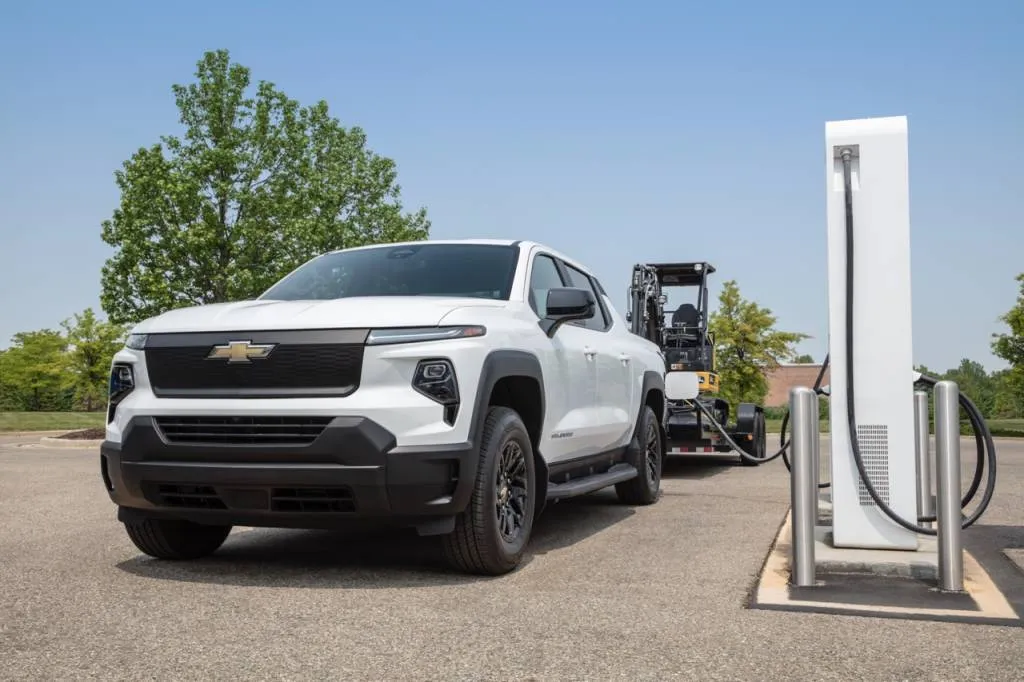The National Highway Traffic Safety Administration (NHTSA) on Friday issued a proposal to update Corporate Average Fuel Economy (CAFE) standards for passenger cars and light-duty trucks, calling for a fleet average of 58 mpg, according to its methodology, by 2032—which will equate to a real-world fleet efficiency average of about 43.5 mpg.
The proposed rules, on which the NHTSA is now taking public comment, call for a 2% annual improvement in fuel efficiency for passenger cars, and a 4% improvement for light trucks, between model years 2027 and 2032. As is always the case with CAFE standards though, the 58-mpg figure in the framework itself represents an array of adjustments built into the rules, as well as the existence of emissions credits automakers can purchase to offset excess emissions.
The proposal also includes a 10% annual improvement in fuel efficiency for commercial pickup trucks and work vans with a gross vehicle weight rating (GVWR) or more than 8,500 pounds and less than 14,001 pounds, beginning with the 2030 model year and continuing through the 2035 model year.
U.S. production of Genesis Electrified GV70 in Alabama
If enacted, these fuel-efficiency increases would eliminate the use of 88 billion gallons of gasoline through 2050 and prevent more than 900 million tons of CO2 emissions during that time, according to an NHTSA press release. The emissions reduction would be the equivalent of taking more than 233 million vehicles off the road from 2022 to 2050, according to the agency.
The proposed rules throttle back efficiency increases somewhat. As Reuters points out, NHTSA rules finalized in 2022 for model years 2024-2026 require a fleet average of 49 mpg by 2026, which calls for efficiency increases of 8% in 2024 and 2025 and 10% in 2026.
EPA rules might result in 67% EV sales by 2032. The current rules, EPA suggests, can be met with about 17% EV sales by 2026. The NHTSA and EPA share authority over emissions standards because they overlap in the EPA’s mandate to reduce pollution and the NHTSA’s mandate to administer rules governing new cars sold in the U.S.
How challenging the NHTSA proposal is to automakers, and how it stands versus proposed EPA rules announced earlier this year, depends on the outcome of a controversial factor that digs deep in rulemaking jargon but is especially important this time around. The NHTSA doesn’t directly consider the true efficiency of EVs, incorporating electricity generation, in its rule making, and the federal government is in the process of updating the Petroleum Equivalency Factor (PEF) that governs how EVs are taken into account.
The level of difficulty in meeting future emissions standards will depend to some level on the revised PEF and whether it becomes more representative of reality, which General Motors is opposing.

2024 Chevrolet Silverado EV WT
GM has also already taken issue with the EPA proposal for the next rule period and what the automaker views as an unrealistic acceleration of the EV market by the end of the decade. GM previously declared an “aspiration” to make all of its light-duty vehicles electric by 2035.
The Natural Resources Defense Council lauded the new standards and called them important to low-income drivers. But several other environmental groups, including the Union of Concerned Scientists and the Center for Biological Diversity spoke up on Friday to suggest that the NHTSA rules could be stronger to support the EPA rules recently released. Consumer Reports suggested that the new rules could go farther, and it pointed to a nationally representative survey it conducted in 2022 suggesting that fuel economy is “very important” or “extremely important” to 70% of American drivers. It also noted that strong CAFE rules will help assure that automakers make their EVs as efficient as possible.
After some negotiation, the NHTSA and EPA are usually in alignment on proposed emissions rules. In practice, if there’s more of a difference between them this time around, it might allow any remaining internal-combustion vehicles to be lower in their fuel efficiency than the EPA rules would permit—especially if EV volumes prove to be higher than assumed by rulemaking. But much is yet to be determined in the details and how this NHTSA proposal carries into a final rule.
with additional reporting by Bengt Halvorson
